Laurent Craste Museum show in NY
Everson Museum of Art Presents Iconoclasts: The Art of Laurent Craste
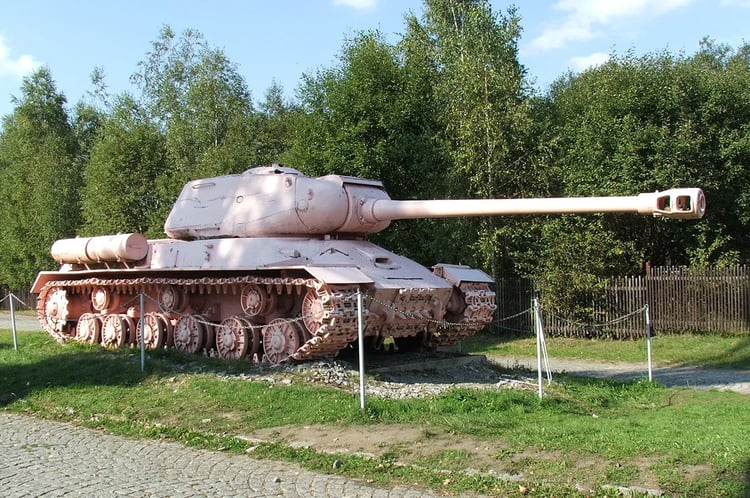 "Aside from bringing people from two different parts of the city and the whole Germany together, the fall of the Berlin wall also marked the abolishment of The Iron Curtain; behind it, countries belonging to the Eastern Bloc functioned under the communist rule since the end of World War II, the former country of Czechoslovakia being one of them.
"Aside from bringing people from two different parts of the city and the whole Germany together, the fall of the Berlin wall also marked the abolishment of The Iron Curtain; behind it, countries belonging to the Eastern Bloc functioned under the communist rule since the end of World War II, the former country of Czechoslovakia being one of them.
After becoming the satellite state of the Soviet Union in 1948, Czechoslovakia was as a rigid society with a lack of economic and social liberties. Despite the attempts to establish political liberalization in the Prague Spring of 1968, the country was invaded by the Soviet Union whose rule lasted until 1989 when a majority of Marxist–Leninist governments collapsed all over Europe.
The Czechoslovaks started consolidating their socio-political sphere, and the spirit of abandoning old relics affiliated with communist rule spread among the youngsters. The controversial art intervention that took place in 1991 in capital's Prague's public space summarized their sentiment and it was organized by the internationally recognized sculptor David Černý, an art student at the time.
Regardless of the possible inflictions, the artist and his friends used pink to paint the Soviet Tank Monument, commemorating the Soviet liberation of Czechoslovakia in 1945. They also erected a huge middle finger and signed the intervention David Černý and the Neostunners. It was their way to articulate the ideological and political turmoil in the country related to past events.
The youngsters' prank was instantly pronounced "an act of civil disobedience", and Černý was arrested. Almost immediately, the Soviet government protested and the tank was repainted to green; however, members of the newly elected parliaments from Public Against Violence and Civic Forum used their official immunity and painted the tank back to pink as a sign of a protest against Černý's arrest. The status of the national monument was abolished, the young artist was released, and the tank was removed from the site after it was painted green, then pink again, a few more times.

The Subversion of Historic Site by David Černý
The Monument to Soviet Tank Crews was a World War II memorial located in Prague. It was erected in the city’s Kinsky Square on 29 July 1945 to commemorate the arrival of the Fourth Tank Army led by the Soviet General Ivan Konev that ended the German occupation of Prague.
The tank was positioned on a massive stone pedestal with its barrel pointing westwards. Initially, it was intended to represent a medium tank of the 63rd Tank Brigade, the first tank to enter Prague in May 1945, but the monument was a different heavy tank. The military historian Tomas Jakl, who specializes in the liberation of Czechoslovakia, explained the difference:
The tank which was built on the monument was an IS2, which is an infantry tank, but the first Soviet tank which came to Prague in the early morning of May 9th, 1945 was a T34 cruiser tank, or fast tank, or medium tank. So it was a completely different type of tank. The number on the turret of the monument was completely different than the one which was on tanks which came to Prague on the early morning of May 9, 1945.
After the communist coup of 1948, the monument became highly ranked to the status of the National Cultural Monument, commemorating the liberation of Prague by the Red Army, while the square was renamed Soviet Tank Square.
In 1989 the Velvet Revolution took place in Czechoslovakia and the communist leadership was dismissed, so the legacy of the tank became the subject of a public discussion. At that point, the Czechs perceived the tank as a symbol of the Soviet occupation that ended the Prague Spring in 1968 rather than the events of World War II.
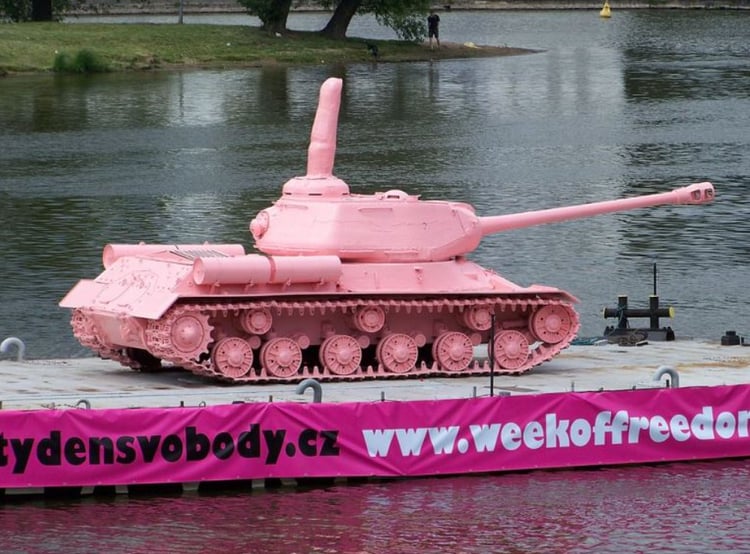
The Re-emergence of The Notorious Pink Tank
As it was mentioned, the problematic tank was removed after intervention conducted by the artist David Černý and his friends, and the political climate changed entirely two years later when Czechoslovakia split into the two sovereign states of the Czech Republic and Slovakia.
In the meanwhile, Černý graduated from the Academy of Arts, Architecture and Design in Prague, participated in the PSI artists residence in New York, as well as in the Whitney Museum Independent Study Program from 1995 to 1996; in 1996 he also received the Pollock Krasner Foundation Grant. The artist gained international recognition for his public sculptures based on a similar rebellious approach as the Pink Tank intervention.
In 2008 Černý proposed a new sculpture refereeing to his iconic act - a pink tank buried in the ground covered with a white invasion stripe, the same as Soviet tanks that entered Czechoslovakia in 1968. Due to the objections from Czech Prime Minister Miloš Zeman and Russian Ambassador Vasili Yakovlev, the project was rejected and instead was released and installed at Lázně Bohdaneč, a spa resort where the Soviet troops were located until the early 1990s.
The Pink Tank temporarily reappeared in Prague in 2011 as part of a celebration of the 20th anniversary of the withdrawal of Soviet occupation forces. The reenacted version included the erected middle finger and was floated on a barge on the Vltava river.
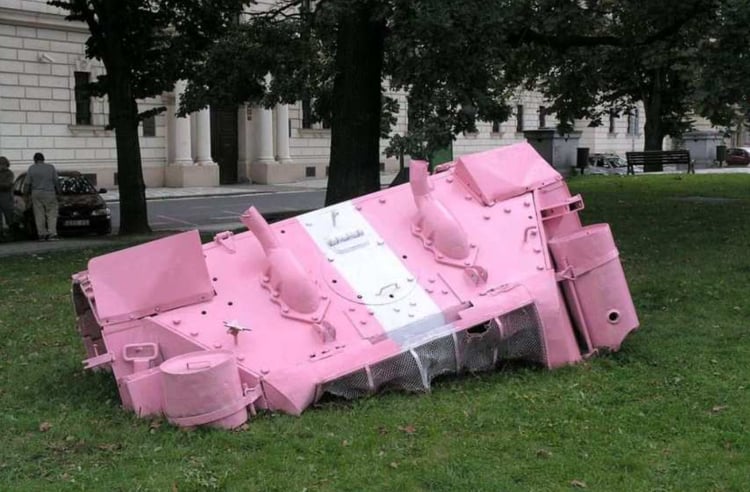
The Significance of Černý’s Monument to Soviet Tank Crews
The original infantry tank still coated in pink is now located at Military Museum Lešany about 20 kilometers south of Prague. Although there were a couple of initiatives for the renewal of the monument coming from the war veterans' organizations, the former site at the Kinsky Square changed its purpose and is now a home of a fountain called Propadliště času (Trapdoor of Time) installed in 2002.
David Černý’s famous action became a significant part of public memory and an apparent source of inspiration for young artists. It tells much about the former zeitgeist and the feeling of repression to which various young people around the globe are currently exposed to in societies operating under different ideological and political matrixes."
Read the full article here
For more on David Černý, please visit: www.hohmann.art.cerny
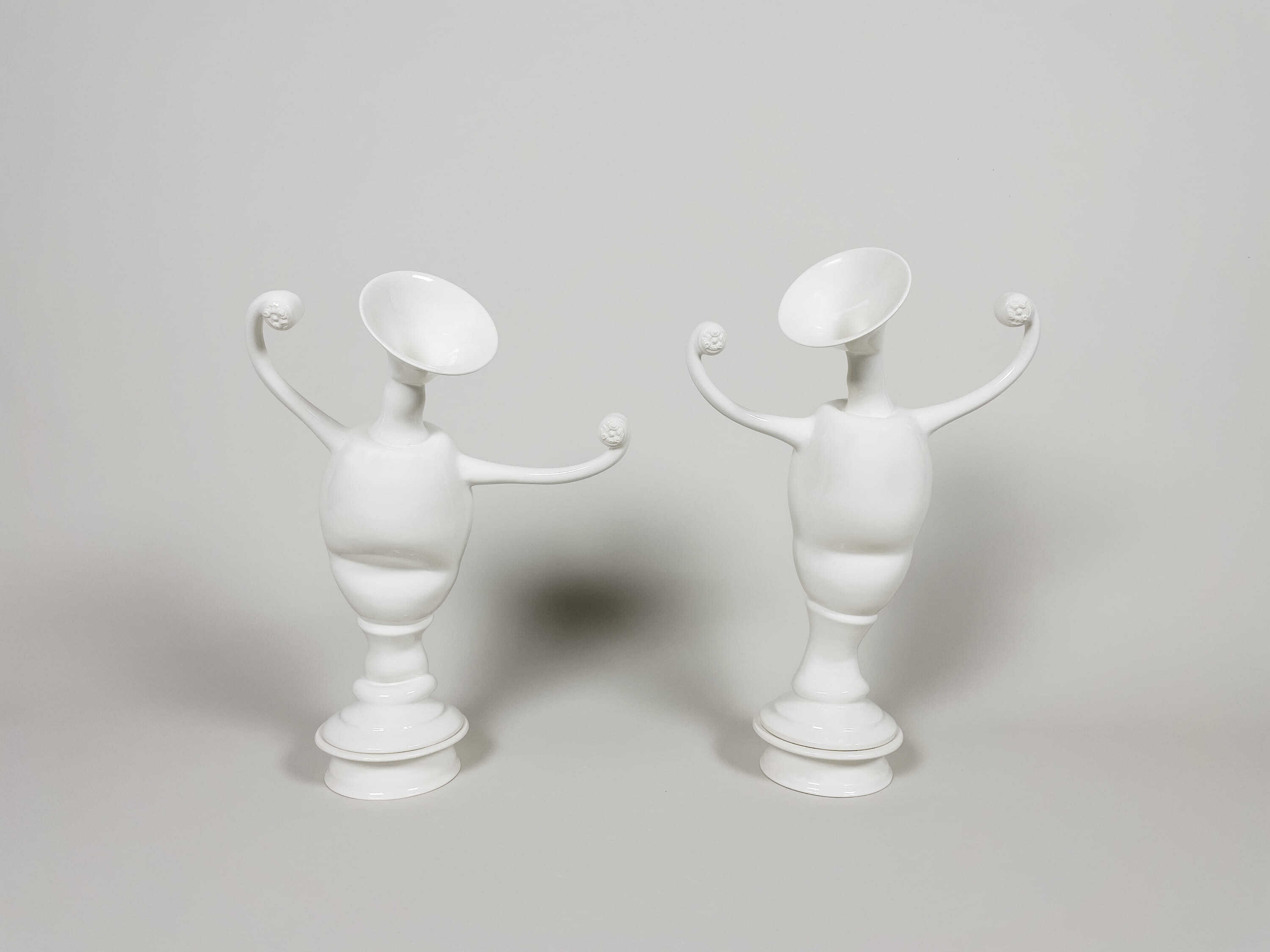
Everson Museum of Art Presents Iconoclasts: The Art of Laurent Craste
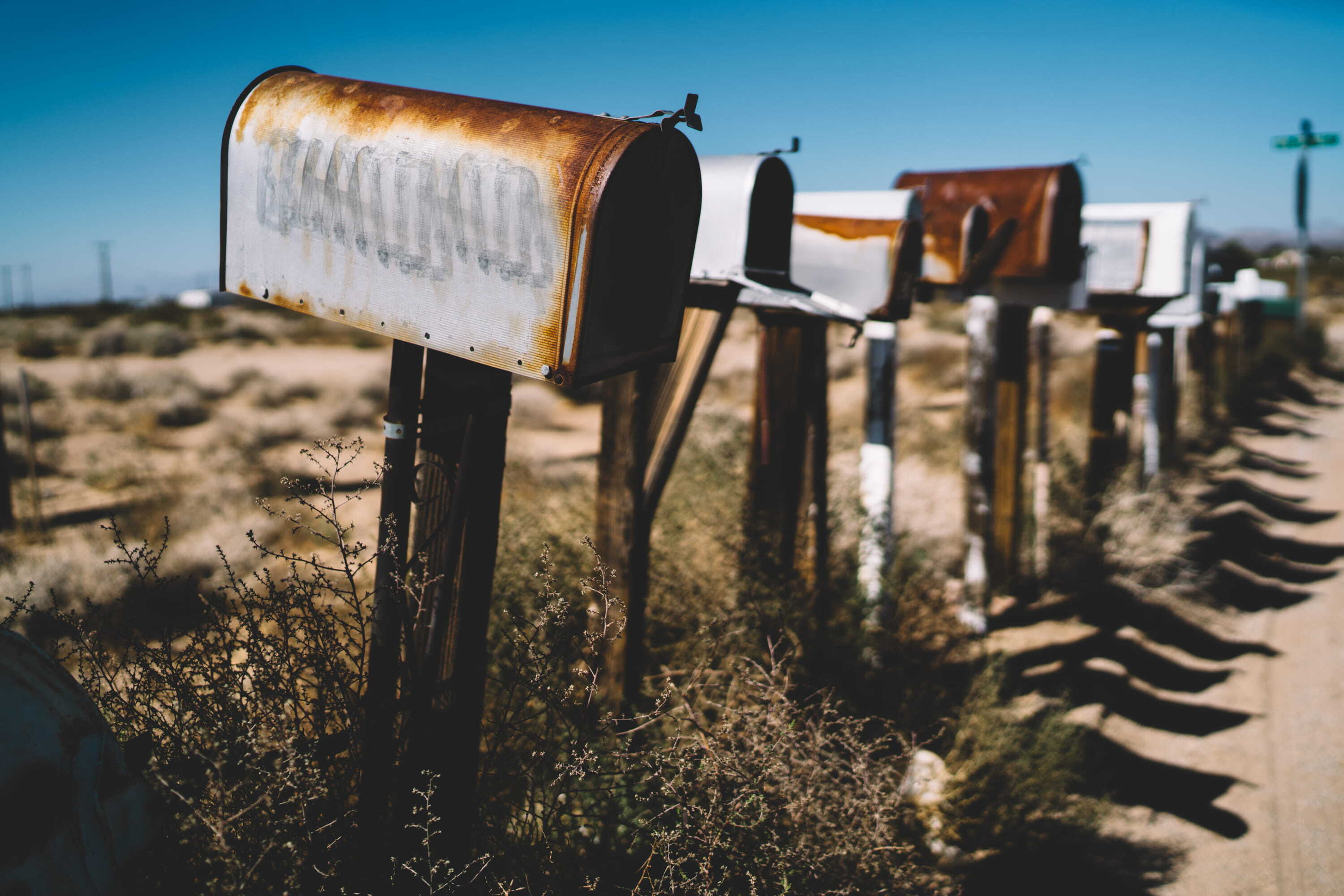
If you’ve recently had an email to us bounce back, don’t worry — there’s a simple explanation.
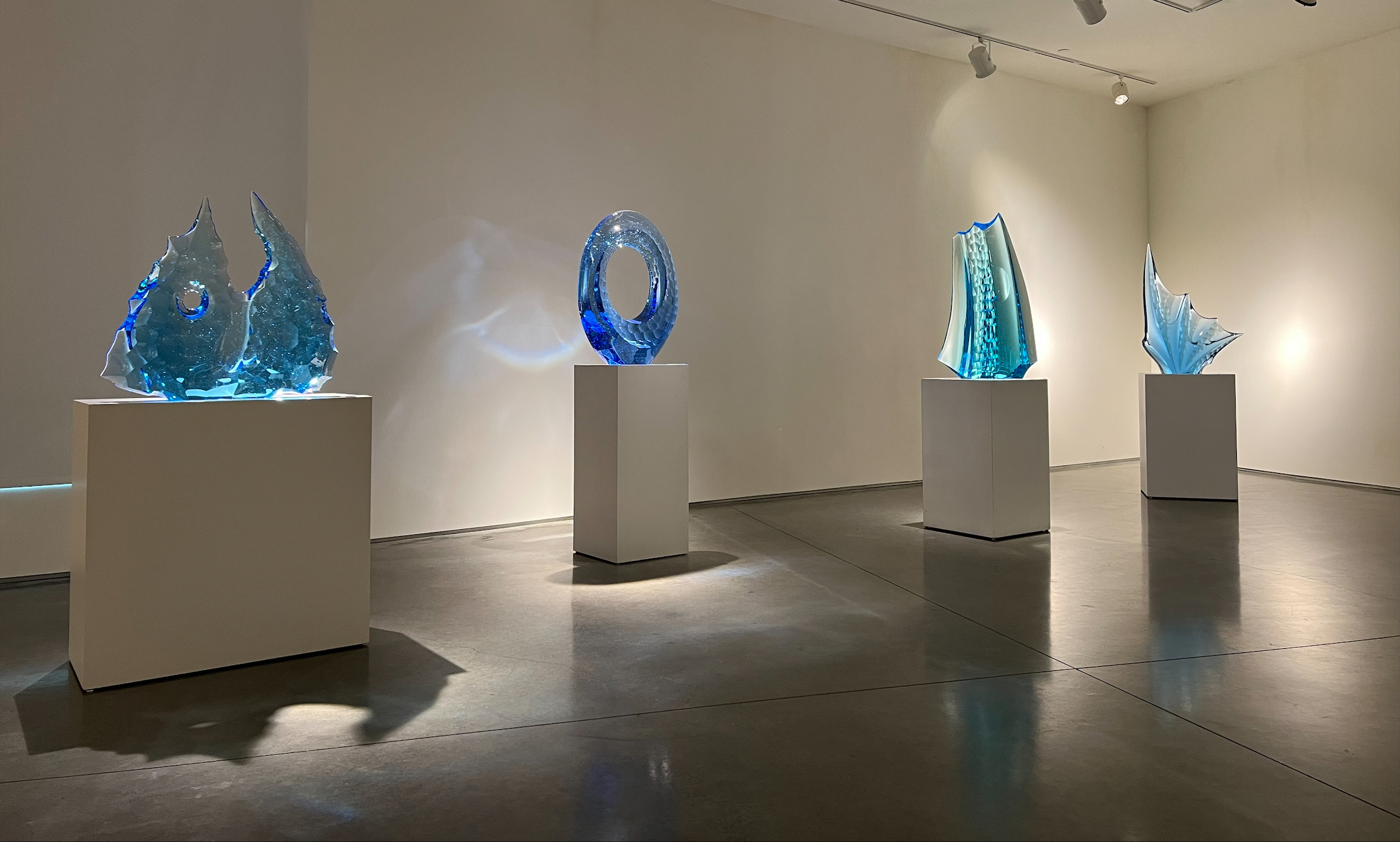
We are delighted to showcase a remarkable collection of glass artists this spring at our Village Court location, where the artistry and innovation of...